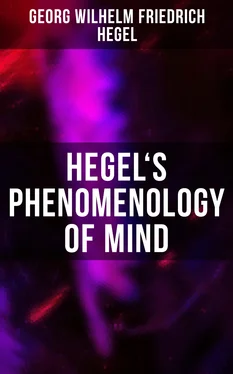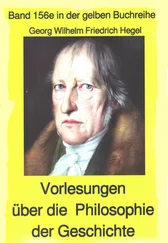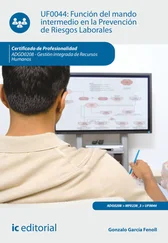To begin with, the second force stands towards the force incited in the character of inciting force, and, moreover, with respect to its content, plays the part of universal medium. But since that second force consists essentially in an alternation of these two moments and is itself force, it is likewise, in point of fact, universal medium only then when it is incited or solicited to being so; and in the same way, too, it is negative unity, or incites and leads to the retraction of force, only by being incited thereto. As a result, this distinction, which took place between one force regarded as inciting and the other as incited, turns also into one and the same reciprocal interchange of characteristics.
The interplay of the two forces in this way arises from and consists in the two being thus determined with opposite characteristics, in their being for one another in virtue of this determination and in the complete and exchange of their characteristics — a transition direct from one to the other, whereby alone these determinations, in which the forces seem to appear independently, have being. For example, the inciting force is set up as universal medium, and, on the other hand, the force incited as a force repressed. But the former is universal medium just by the very fact of the latter being repressed: that is to say, this latter is really what incites the former, and makes it the medium it claims to be. The former gets the character it has only through the other, and is an inciting force only so far as it is incited by the latter to be so. And it loses just as readily this character given to it, for this character passes, or rather has already passed, into the character of the other. The former, acting in an external way, takes the part of universal medium, but only by its having been incited by the other force to do so. This means, however, that the latter gives it that position, and is really itself essentially universal medium: it gives the inciting agency this character just because this other character is essentially its own, i.e. because it is really its own self.
To complete our insight into the principle of this process, we may notice, further, that the distinctions themselves reveal distinction in a twofold manner. They are, on the one hand, distinctions of content, since one extreme is force reflected into itself, while the other is a medium for the constituent elements involved: on the other hand, they appear as distinctions of form, since one incites and the other is incited, the former being active, the latter passive. As regards the distinction of content, they are in fact distinct, or distinct for us [who are analysing the process]; as regards distinction of form, however, they are independent, in their relation parting asunder of themselves, and standing opposed. In the perception of the movement of force, consciousness becomes aware that the extremes, in both these aspects, are nothing per se, that rather these sides, in which their distinction of nature was meant to consist, are merely vanishing moments, an immediate transition of each into its opposite. For us, however [who are analysing the process], it was also true, as stated above, that per se the distinctions, qua distinctions of content and form, vanished: and on the side of form, the active, inciting, or independent factor was in its very nature the same as what, from the side of content, was presented as repressed force, force driven back into itself; the passive, incited, or related factor was, from the side of form, the same as what, from the side of content, took shape as universal medium for the many constituent elements.
From this we see that the notion of force becomes actual when resolved into two forces, and we see too how it, comes to be so. These two forces exist as independent entities: but their existence lies in a movement each towards each, of such a kind that in order to be, each has in reality to get its position purely through the other; that is to say, their being has purely the significance of disappearance. They are not like extremes that keep to themselves something positively fixed, and merely transmit an external property to one another through their common medium and by external contact: they are what they are solely in this medium and in their contact with each other. We have there immediately both force as it is independently, force repressed within itself, and also its expression, force inciting and force being incited. These moments are thus not allotted to two independent extremes, offering each other only an opposite pole: rather their true nature consists simply in each being solely through the other, and in each ceasing eo ipso to be what it thus is through the other; since it is the other. They have thus, in point of fact, no substances of their own which could support and maintain them. The notion of force rather maintains itself as the essence in its very actuality: force when actual exists wholly and only in its expression; and this, at the same time, is nothing else than a process of cancelling itself. This actual force, when represented as detached from its expression and existing by itself, is force driven back into itself; but this feature is itself, in point of fact, as appears from the foregoing, merely a moment in the expression of force. The true nature of force thus remains merely the thought or idea of force; the moments in its realization, its substantial independence and its process, rush, without let or hindrance, together into one single undivided unity, a unity which is not force withdrawn into itself (for this is merely one of those moments), but is its notion qua notion. The realization of force is, then, at the same time dissipation or loss of reality; it has thereby become something quite different, viz. this universality, which understanding knows from the start or immediately to be its essential nature, and which shows itself, too, to be the essence of it in what is supposed to be its reality, in the actual substances.
So far as we look on the first universal as the notion of understanding, where force does not yet exist for itself, the second is now its essential reality, as it is revealed in and for itself. Or, conversely, if we look on the first universal as the immediate, which should be an actual object for consciousness, then this second has the characteristic of being the negative of sensuously objective force: it is force, in the form in which, in its true being, force exists merely as object for understanding. The first would be force withdrawn into itself, i.e., force as substance; the second, however, is the inner being of things qua inner, which is one and the same with the notion qua notion.
This true being of things has here the characteristic that it does not exist immediately for consciousness; rather, consciousness takes up a mediated relation to the inner; in the form of understanding it looks through the intervening play of forces into the real and true background of things. The middle term combining the two extremes, understanding and the inner of things, is the explicitly evolved being of force, which is now and henceforth a vanishing process for understanding itself. Hence it is called Appearance ( Erscheinung ); for being which is per se straightway non-being we call a show, a semblance (Schein). It is, however, not merely a show, but appearance, a totality of seeming ( Schein ). This totality as totality or universal is what makes up the inner world, the play of forces in the sense of its reflection into itself. There consciousness has before itself in objective form the things of perception as they truly are, i.e. as moments turning, without halt or separate subsistence, directly into their opposite, the “one” changing immediately into the universal, the essential becoming at once something unessential, and vice versa. This play of forces is consequently the development of the negative; but its true nature is the positive element, viz. the universal, the implicit object, the object existing per se.
Читать дальше












